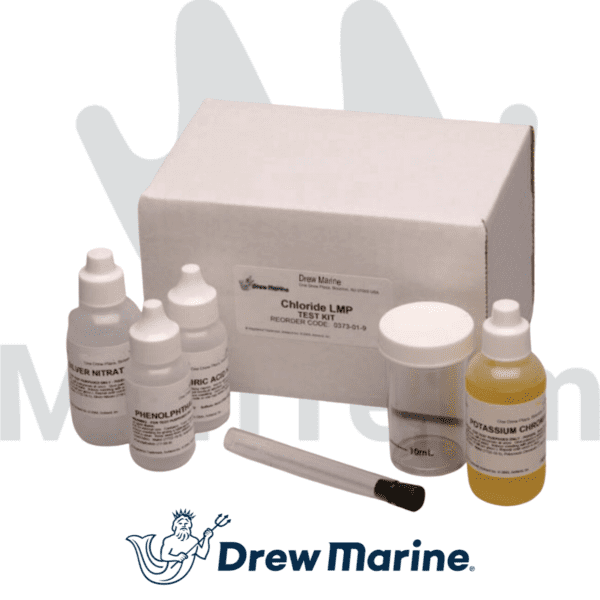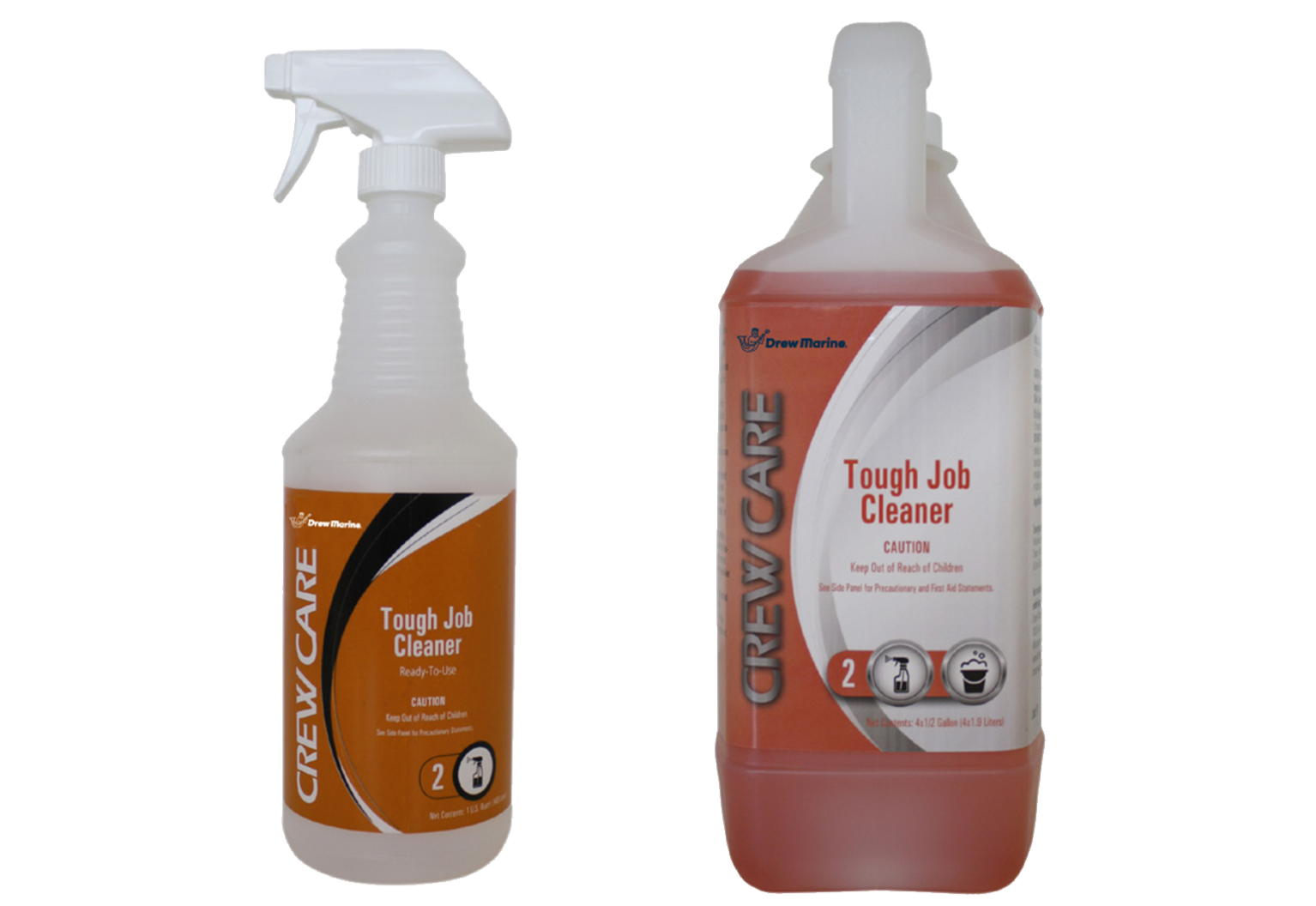The Chloride LMP Test Kit contains everything needed to measure chloride in boiler water for low-pressure (0-32 bar
and medium-pressure (32-60 bar) boiler systems as well as makeup water. The easy drop count titration method provides
accurate results. This method utilizes silver nitrate chemistry where the sample is neutralized below the phenolphthalein indicator endpoint (pH 8.3). After neutralization, potassium chromate indicates the end point of the silver nitrate titration of chloride. The number of drops of silver nitrate required to reach the endpoint is multiplied by a factor to determine the ppm of chloride.
Chloride LMP Test Kit
(Range 10-40 ppm and 100-400 ppm Chloride) PCN 0373019
ITEMS NEEDED FOR
SAMPLE PRETREATMENT
Chloride LMP Test Kit PCN 0373019
Sample Pretreatment, 50 gm PCN 0374025 (includes 0.5 gm scoop)
Filter Paper, Box of 100 PCN 0225012
Funnel, Plastic PCN 0221010
Stirring Rod, Plastic, 150 mm PCN 0417015
The Drew Marine Chloride LMP Test Kit is a comprehensive solution designed to accurately measure chloride concentrations in boiler water systems, particularly for low-pressure (0–32 bar) and medium-pressure (32–60 bar) boilers, as well as in makeup and treated cooling water. This kit employs a straightforward drop-count titration method utilizing silver nitrate chemistry, ensuring precise and reliable results essential for maintaining optimal boiler performance and preventing corrosion.
🔧 Technical Specifications
🧪 Test Procedure Overview
Sample Collection: Cool the water sample to 25°C (77°F) using a sample cooler to prevent flashing and concentration changes.
Sample Volume:
Neutralization:
Add 3 drops of Phenolphthalein Indicator.
If the sample turns pink, add Sulfuric Acid dropwise until the pink color disappears, then add one additional drop.
Indicator Addition: Add 6 drops of Potassium Chromate; the sample will turn yellow.
Titration:
Calculation:
⚠️ Application & Use
Regular monitoring of chloride levels is crucial for boiler maintenance:
Low-Pressure Boilers: Maximum acceptable chloride level is 300 ppm.
Medium-Pressure Boilers: Maximum acceptable chloride level is 40 ppm.
Makeup and Cooling Water: Testing is recommended to detect potential seawater contamination or treatment issues.
For cooling water treated with MAXIGARD®, LIQUIDEWT™, or DREWGARD® CWT, sample pretreatment is necessary before testing. This involves adding a specific pretreatment reagent, allowing precipitates to settle, and filtering the sample prior to analysis.





